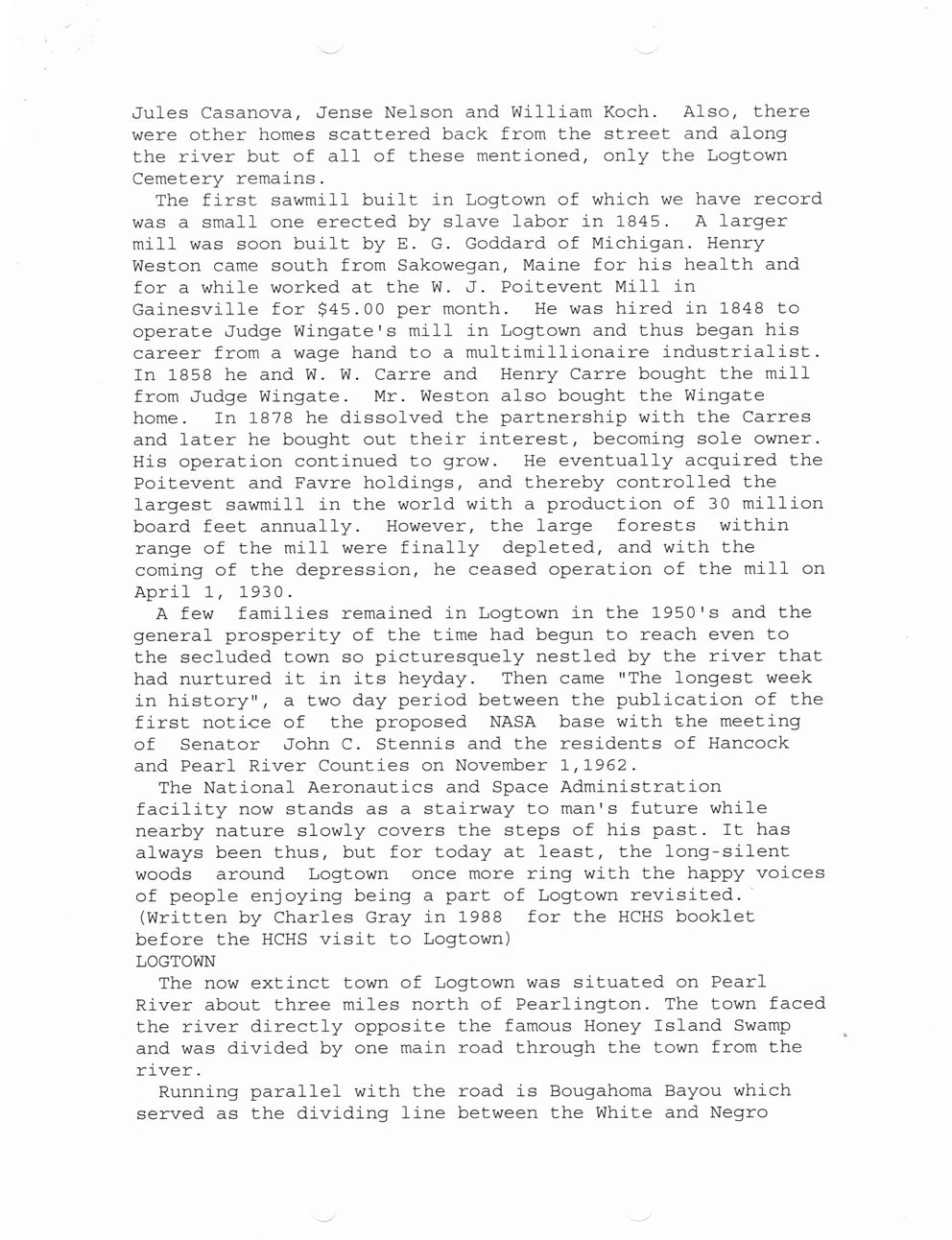This text was obtained via automated optical character recognition.
It has not been edited and may therefore contain several errors.
Jules Casanova, Jense Nelson and William Koch. Also, there were other homes scattered back from the street and along the river but of all of these mentioned, only the Logtown Cemetery remains. The first sawmill built in Logtown of which we have record was a small one erected by slave labor in 1845. A larger mill was soon built by E. G. Goddard of Michigan. Henry Weston came south from Sakowegan, Maine for his health and for a while worked at the W. J. Poitevent Mill in Gainesville for $45.00 per month. He was hired in 1848 to operate Judge Wingate's mill in Logtown and thus began his career from a wage hand to a multimillionaire industrialist. In 1858 he and W. W. Carre and Henry Carre bought the mill from Judge Wingate. Mr. Weston also bought the Wingate home. In 1878 he dissolved the partnership with the Carres and later he bought out their interest, becoming sole owner. His operation continued to grow. He eventually acquired the Poitevent and Favre holdings, and thereby controlled the largest sawmill in the world with a production of 30 million board feet annually. However, the large forests within range of the mill were finally depleted, and with the coming of the depression, he ceased operation of the mill on April 1, 1930. A few families remained in Logtown in the 1950's and the general prosperity of the time had begun to reach even to the secluded town so picturesquely nestled by the river that had nurtured it in its heyday. Then came "The longest week in history", a two day period between the publication of the first noti-ce of the proposed NASA base with the meeting of Senator John C. Stennis and the residents of Hancock and Pearl River Counties on November 1,1962. The National Aeronautics and Space Administration facility now stands as a stairway to man's future while nearby nature slowly covers the steps of his past. It has always been thus, but for today at least, the long-silent woods around Logtown once more ring with the happy voices of people enjoying being a part of Logtown revisited. (Written by Charles Gray in 1988 for the HCHS booklet before the HCHS visit to Logtown) LOGTOWN The now extinct town of Logtown was situated on Pearl River about three miles north of Pearlington. The town faced the river directly opposite the famous Honey Island Swamp and was divided by one main road through the town from the river. Running parallel with the road is Bougahoma Bayou which served as the dividing line between the White and Negro

Logtown Logtown Revisited (03)